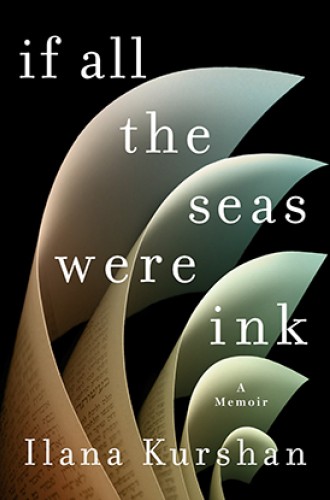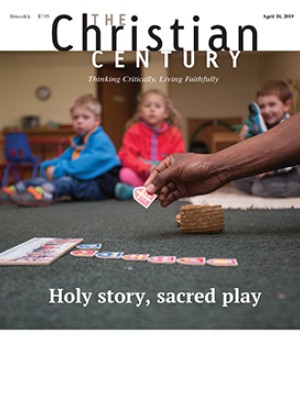A personal discipline of Talmud study
Ilana Kurshan shows how the practice of Daf Yoni gave structure to a life made formless and void.
Ilana Kurshan’s memoir takes readers from her divorce through seven years of pain, resilience, remarriage, and the birth of her children. Why this particular time period? Because these are the years in which Kurshan undertakes the practice of Daf Yomi, the study of two sides of a single page of Talmud every day. The Babylonian Talmud, redacted in 700 CE, records the oral tradition that is taught to have been revealed at Sinai along with the Pentateuch. To engage with the entire corpus of 2,711 pages—even if only in a cursory sense—takes seven years.
Readers may imagine Daf Yomi to be an ancient practice, but it is a relatively contemporary practice, designed in 1923 to unite Jews around the world in a single form of study. Because the majority of people engaged in the first generation of Daf Yomi were murdered, a veil of tragedy remains over the practice even today. But for many Jews, a resurgence of this form of Talmud study also carries hope, creating a sense of resurrection of the thousands of houses of study destroyed during the Holocaust.
Read our latest issue or browse back issues.
Some Jews have criticized the practice of Daf Yomi. Traditionalists point out that one hour a day is not nearly sufficient for personal study: carefully reviewing each text should take weeks and should involve learning from a teacher. Other critics worry that quick study of Talmud might become a substitute for the deep kind of text study that enhances ethical behavior or personal connection with God.
Further, in some circles the study of Talmud by women is considered rebellious. Although the study of core biblical texts has been integrated into the life of Jewish women for millennia, esoteric and legal text study was—except in a few particular cases—reserved for men. The resurgence of serious text study of Talmud by women, particularly young women, is a subversive act that stems from a women’s movement led by several of Kurshan’s mentors. She writes about (and the book is endorsed by) several well-known female scholars with whom she has worked.
Kurshan engages with a wide range of literary sources, from Madeleine L’Engle to Mary Oliver. At times, her narrative suggests that she is pursuing the study of Talmud in a way that could be done by anyone. But it’s clear from the writing that she is highly educated and of exceptional intelligence. Her sometimes folksy descriptions of her learning experiences brush up against the extraordinary extent to which she can absorb and recall details. It takes a brilliant intellect to study Talmud the way Kurshan does.
Despite being structured around a seemingly dry and abstract ancient text, the memoir is both personal and vulnerable—particularly when Kurshan discusses her experiences alongside the text itself. The writing dips deeply into eccentricities that she attributes to her combination of sorrow and social isolation.
For example, she discusses an instance in which she prepares her Sabbath meal and talks to her fish filets, naming them after the rabbis in the text she’s studying. She invites readers to accompany her as she remembers some of her greatest challenges in graphic detail: her father-in-law’s illness, her exercise routines, the delivery of her first son, her relationship with a friend whom she refers to as her therapist. She discusses her struggles with intimacy and wonders about excessive disclosure in her writing. “When it comes to lived life I am a deeply private person but when it comes to written life, I unclasp the whalebone stays and turn away with lowered eyes as my loosened bodice rustles to the floor.” Indeed, at some points the memoir feels like a personal diary accidentally made public.
Kurshan shows how Talmud study gives structure to a life made formless and void by the dissolving of a marriage. Discussing her struggles with psychiatric disorders, including her anorexia in college, she explains how study and ritual help her to address her uncertainty and anxiety. When her days seem to have the least shape, she relies upon “prayer as an organizing principle.” The practice of Daf Yomi is a way of gaining control by imposing discipline upon her life.
Over the seven years the book chronicles, Kurshan moves from loss to joy. A life marked by the sorrow and solitude of divorce becomes a life characterized by marital love and a home full of children. As a reader, I was relieved that her suffering is mitigated by the end of this period of her life. I couldn’t help but think that her story fulfills the promise of Psalm 126:5, “Those who sow in tears will reap in joy.”
She doesn’t claim that Talmud study is directly responsible for her transformation. But it’s apparent that in her times of self-doubt, pain, and hopelessness, Kurshan finds a connection to the infinite through her learning. In linking each passage of Talmud to her everyday life, she is able to interweave her own experiences and the wisdom of the generations. If All the Seas Were Ink provides a true and clear example of text study that benefits the soul as well as the mind.







